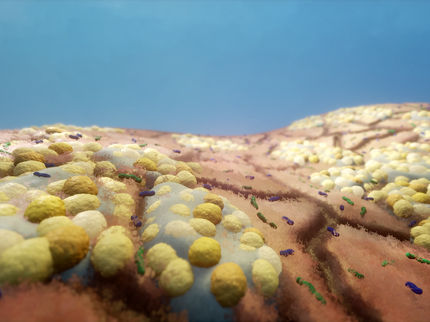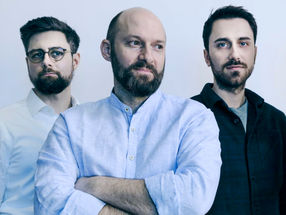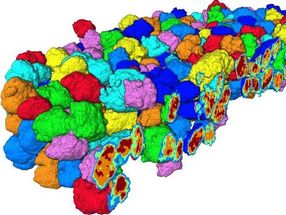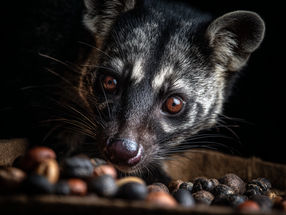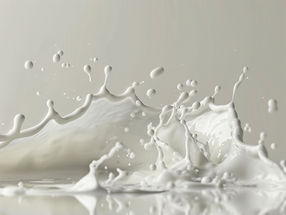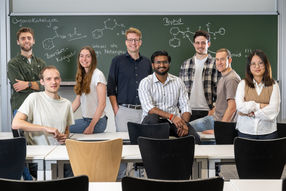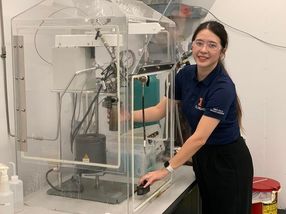Nasal microbiome: resource scarcity as an opportunity
Advertisement
Potentially dangerous staphylococci compete with other bacteria for biotin in the human nasal cavity. This could be a new starting point in the fight against germs.
Our nose is home to a community of microorganisms that can contain potentially dangerous germs as well as harmless ones. The bacterium Staphylococcus aureus is particularly notorious, especially as some strains have developed extensive antibiotic resistance and the serious infections they cause are sometimes no longer treatable. This makes the bacterium one of the most feared "hospital germs".
Around a third of people harbor S. aureus and therefore carry a bacterium in their nose that may be pathogenic, i.e. cause illness. Whether it feels comfortable there, however, depends very much on its more harmless co-inhabitants, the so-called commensals. Such non-pathogenic bacteria can exert both growth-promoting and inhibitory influences on S. aureus.
As a study recently published in the ISME Journal shows, competition plays a major role in the nutrient-poor habitat of the nose. "There is an active competition between S. aureus and nasal commensals for the vitamin biotin, which influences the fitness of S. aureus," explains Simon Heilbronner, Professor of Microbiology at the LMU Biocenter and head of the study. The infection biologist and his team investigated the molecular mechanisms underlying such interactions between S. aureus and its commensals.
Biotin is of existential importance for all living organisms because it acts as a cofactor for enzymes and is therefore indispensable for various metabolic pathways, including gluconeogenesis, fatty acid synthesis and the breakdown of amino acids. The human body cannot produce the substance itself and must absorb it with food, which is why the concentration in the tissue generally remains low. "Our results show that biotin is also only available to a very limited extent in the nasal cavity and that a deficiency negatively affects the growth and functionality of the cell membrane of S. aureus," explains Simon Heilbronner.
Although the bacterium - as well as some of its commensals - can also produce biotin itself, the synthesis consumes a lot of energy and certain amounts of the vitamin are also constantly lost again involuntarily via processes on the cell membrane. "All nasal bacterial strains studied therefore have very effective molecular mechanisms for the uptake of the vitamin." A decisive factor in view of the competition for this important substance.
In addition, some bacteria - especially coagulase-negative staphylococci - are heavily dependent on neighbors that can produce biotin, because they themselves completely lack this ability. They therefore feed on the production of others and thus influence the amount of biotin available in the nasal habitat. As a result, the vitamin remains in short supply and thus a limiting factor for growth.
"We were able to show that biotin strongly influences the interactions between the species of the human nasal microbiome and ensures both competition and mutual dependencies," says Heilbronner. "Despite its ability to produce biotin itself, S. aureus is dependent on absorbing additional biotin from the environment in order to grow optimally."
This would be a possible starting point in the fight against multi-resistant germs: "We could develop probiotics consisting of commensals that do not supply S. aureus with biotin, but compete with it. And use new active substances that block the synthesis or absorption of biotin. This should make it possible to expel S. aureus from the nose."
Note: This article has been translated using a computer system without human intervention. LUMITOS offers these automatic translations to present a wider range of current news. Since this article has been translated with automatic translation, it is possible that it contains errors in vocabulary, syntax or grammar. The original article in German can be found here.
Original publication
Other news from the department science
Most read news
More news from our other portals
Something is happening in the life science industry ...
This is what true pioneering spirit looks like: Plenty of innovative start-ups are bringing fresh ideas, lifeblood and entrepreneurial spirit to change tomorrow's world for the better. Immerse yourself in the world of these young companies and take the opportunity to get in touch with the founders.





